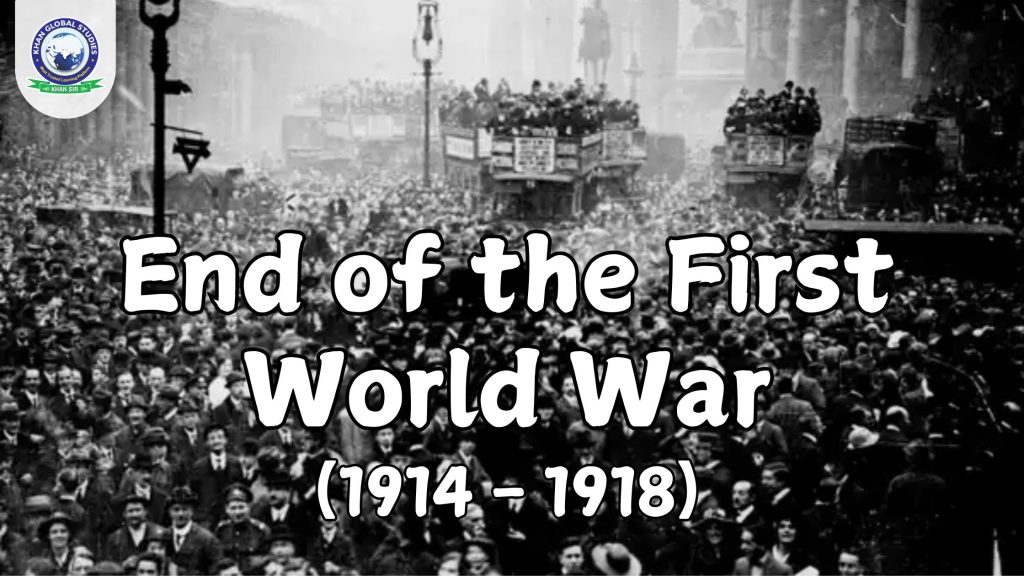The Armistice of November 11, 1918, was the end of World War I, one of the most devastating conflicts in human history. Signed in a train carriage at Le Francport, near Compiègne, France, the agreement officially halted hostilities on land, sea, and in the air between the Allies and Germany, the last major Central Power to surrender. Earlier, Bulgaria, the Ottoman Empire, and Austria-Hungary had already agreed to the armistice at various points.
Background to the Armistice
Germany’s Deteriorating Situation
By August 1918, following the decisive Battle of Amiens, Germany’s situation had deteriorated considerably. The Allies, composed primarily of France, Britain, and the United States, launched the Hundred Days Offensive, which severely weakened the German army. On the Western Front, German forces were in full retreat, and the morale of their soldiers was at an all-time low.
Additionally, major Central Powers such as Austria-Hungary and the Ottoman Empire were on the verge of collapse. Bulgaria surrendered on September 29, 1918, leaving Germany even more isolated and vulnerable to attack from southern Europe.
Domestic unrest in Germany
Conditions were also rapidly deteriorating within Germany. Severe food shortages caused by the Allied naval blockade and the Spanish flu pandemic endangered both the civilian population and the military. These factors, combined with demoralizing defeats on the battlefield, led to growing unrest within Germany, including strikes, mutinies, and widespread civilian discontent.
Beginning of Peace Negotiations
By late September 1918, the German military high command, led by General Ludendorff, recognized that further fighting was futile. On September 29, Ludendorff informed Kaiser Wilhelm II that it was no longer possible to continue the war and requested that negotiations for peace be initiated based on U.S. President Woodrow Wilson’s Fourteen Points. This was a series of proposals aimed at establishing a just and lasting peace, which Germany hoped would lead to more favourable terms.
Appointment of a New Chancellor
On October 3, 1918, Prince Maximilian of Baden was appointed the new Chancellor of Germany, tasked with facilitating the peace process. However, Wilson demanded that Germany should evacuate all occupied territories and that the Kaiser should step down to pave the way for genuine negotiations.
Fall of the German Monarchy and Signing of the Armistice
Revolution in Germany
By the end of October 1918, the revolution had begun in Germany. Sailors revolted in Kiel, followed by workers and soldiers who took control of major cities. On November 9, 1918, Chancellor Prince Max announced the abdication of Kaiser Wilhelm II and the Weimar Republic was proclaimed, with Friedrich Ebert taking over as head of the new government.
Terms and Signatures of the Armistice
On November 11, 1918, Germany’s representative Matthias Erzberger signed the armistice in a railroad carriage at Compiègne with Supreme Allied Commander Marshal Ferdinand Foch. The armistice was signed at 5:45 a.m., but it took effect at 11:00 a.m. the same day, often referred to as “the eleventh hour of the eleventh day of the eleventh month.”
Under the terms of the armistice:
- Germany was required to cease all military operations on the Western Front.
- The evacuation of German forces from the west bank of the Rhine was to begin, and the region was to be occupied by Allied forces.
- Germany had to hand over a vast amount of military equipment, including aircraft, submarines, and artillery.
- The release of Allied prisoners of war was mandated.
However, the Allied naval blockade of Germany continued and no immediate provision was made for the release of German prisoners of war.
The Last Day of the War
Despite the signing of the armistice, fighting continued until 11:00 a.m. on November 11, 1918. Tragically, an estimated 2,738 soldiers were killed on the last day of the war. Many soldiers lost their lives in the confusion, still following orders to attack, unaware that the armistice had already been signed.
Notable deaths on the final day
- Augustin Trebuchon, the last French soldier to die, was killed while delivering a message to his comrades.
- Henry Gunther, an American soldier, was killed at 10:59 a.m., just one minute before the ceasefire took effect, becoming the last American soldier to die in the war.
- British and Canadian soldiers were also killed in the final hours, as troops continued to fight in the absence of direct orders to cease.
Post-Armistice Occupation and Treaty of Versailles
Occupation of the Rhineland
After the armistice, Allied forces occupied the Rhineland. The occupation involved forces from the United States, France, Britain, and Belgium, and was intended to ensure that Germany complied with the terms of the agreement.
Treaty of Versailles
The armistice was only a temporary measure, and in the months to come, it was extended several times. The Treaty of Versailles, signed on June 28, 1919, officially ended the war. The treaty imposed harsh penalties on Germany, including significant territorial losses, military restrictions, and massive reparations. It took effect on January 10, 1920, but the punitive terms would have long-term consequences, fueling resentment and contributing to the rise of Nazi Germany in the years to come.
The Legacy of the Armistice
The November 11 armistice is celebrated annually as a symbol of the end of World War I. Different countries celebrate the day in different ways:
- In many countries, it is observed as Armistice Day or Remembrance Day, a solemn occasion to honour the millions who lost their lives in the war.
- In the United States, it is celebrated as Veterans Day, a holiday that honours all military veterans, not just those who served in World War I.
The “Stab in the Back” Myth
After the war, Germany’s military leadership propagated the idea that the German army was not defeated on the battlefield but rather had been “stabbed in the back” by civilian leaders and left-wing revolutionaries. This “stab in the back” myth substantially destabilized the political climate of the Weimar Republic and undermined confidence in its democratic institutions, setting the stage for further conflict.
Conclusion
The armistice of November 11, 1918, was a momentous event that ended four years of brutal conflict and brought a fragile peace to a war-weary world. While the armistice provided an immediate respite from fighting, the harsh terms of the Treaty of Versailles that followed sowed the seeds of future discord, ultimately leading to the outbreak of World War II two decades later.
Frequently Asked Questions
Question 1: Why was the time for the armistice set at 11:00 a.m.?
Answer: The armistice went into effect on November 11 at 11:00 a.m., known as the “Eleventh Hour Armistice.” This symbolic time was chosen by the Allies so that it would become a historic and memorable event.
Question 2: What is the difference between the Armistice and the Treaty of Versailles?
Answer: The armistice was a temporary agreement that stopped the fighting, while the Treaty of Versailles officially ended the war and imposed harsh terms on Germany.
Question 3: Did fighting continue after the armistice?
Answer: Technically no, but fighting continued in the hours before the armistice. Many soldiers were killed until the last minute on November 11, 1918.
Question 4: Why did Germany accept the armistice?
Answer: Germany had no choice. The food crisis, shortage of soldiers and political instability inside the country forced Germany to surrender.
Question 5: How is the ceasefire celebrated?
Answer: The day of the ceasefire is celebrated as Remembrance Day or Veterans Day in many countries. The sacrifice of the soldiers is remembered on this day.




